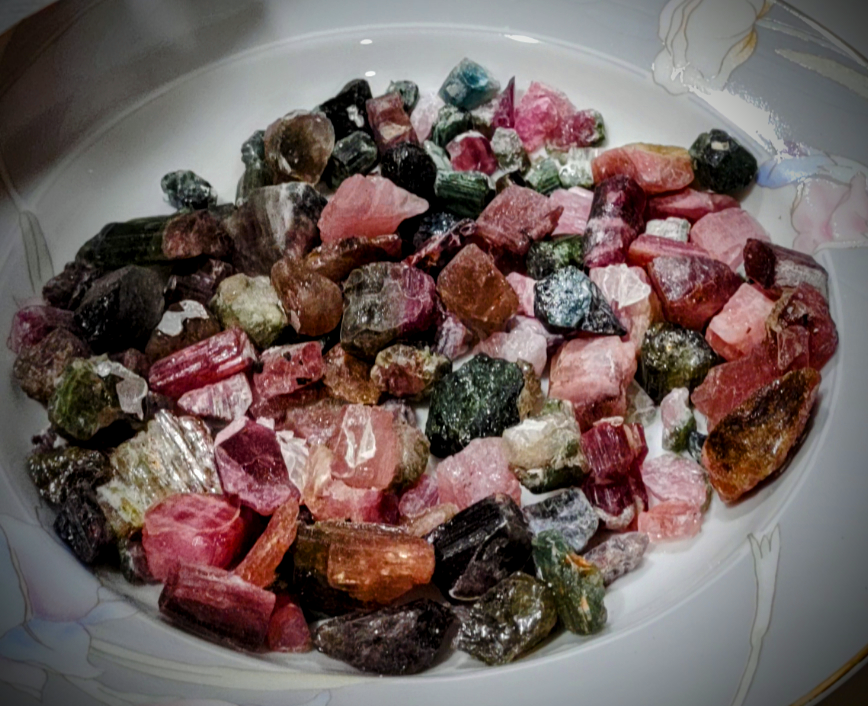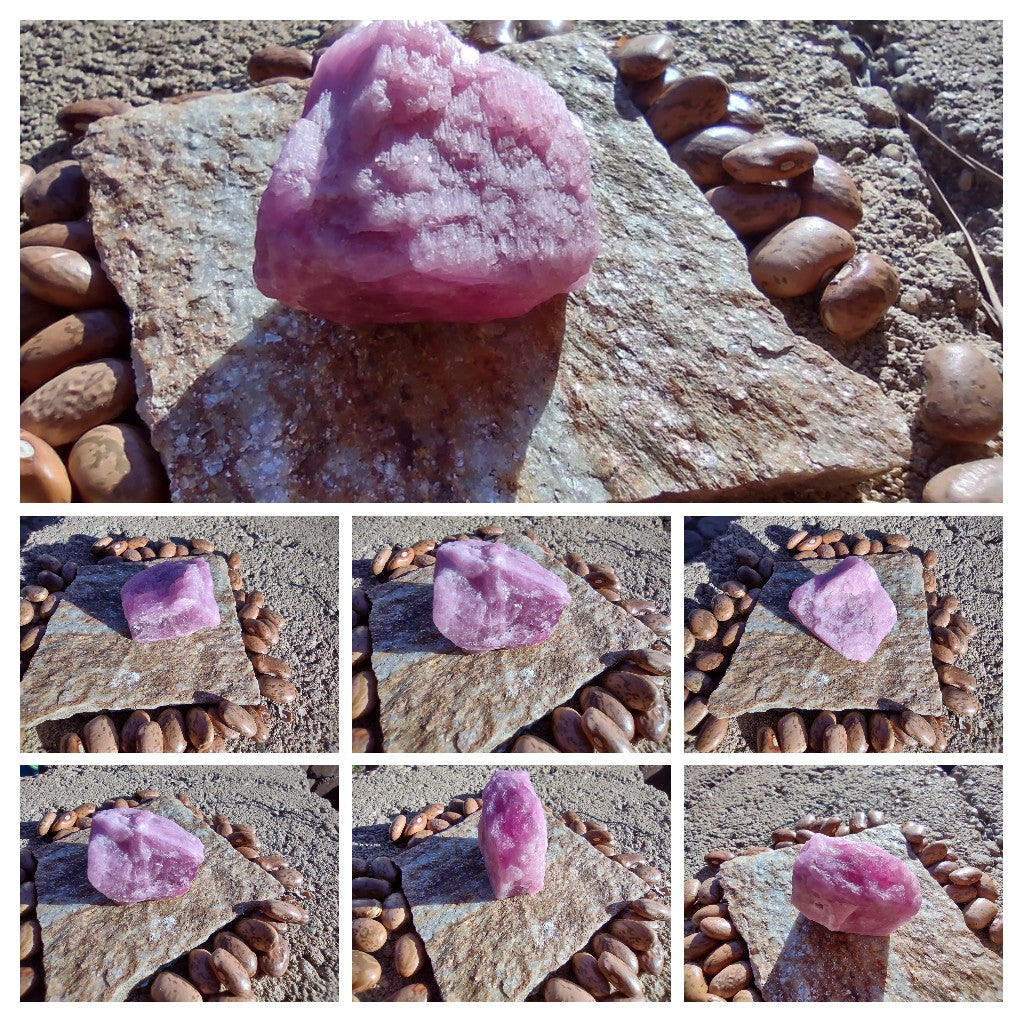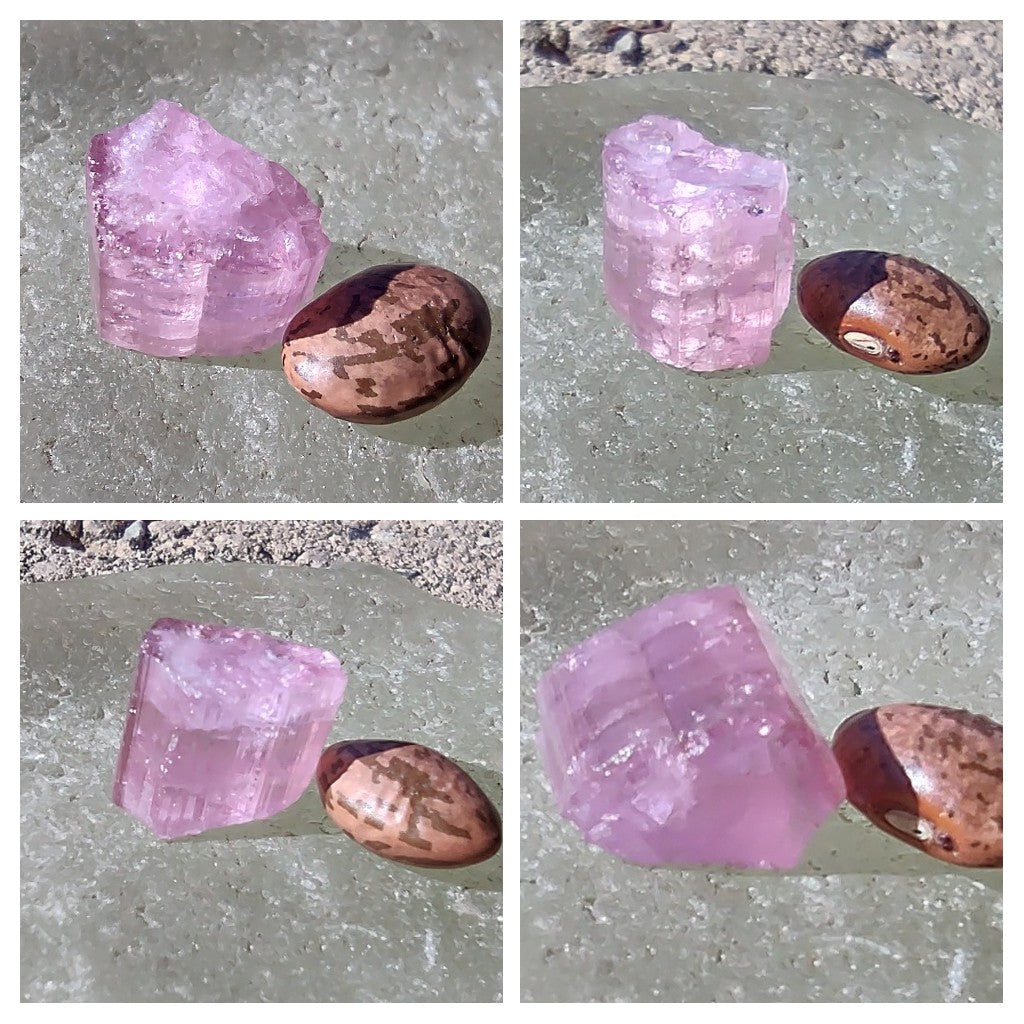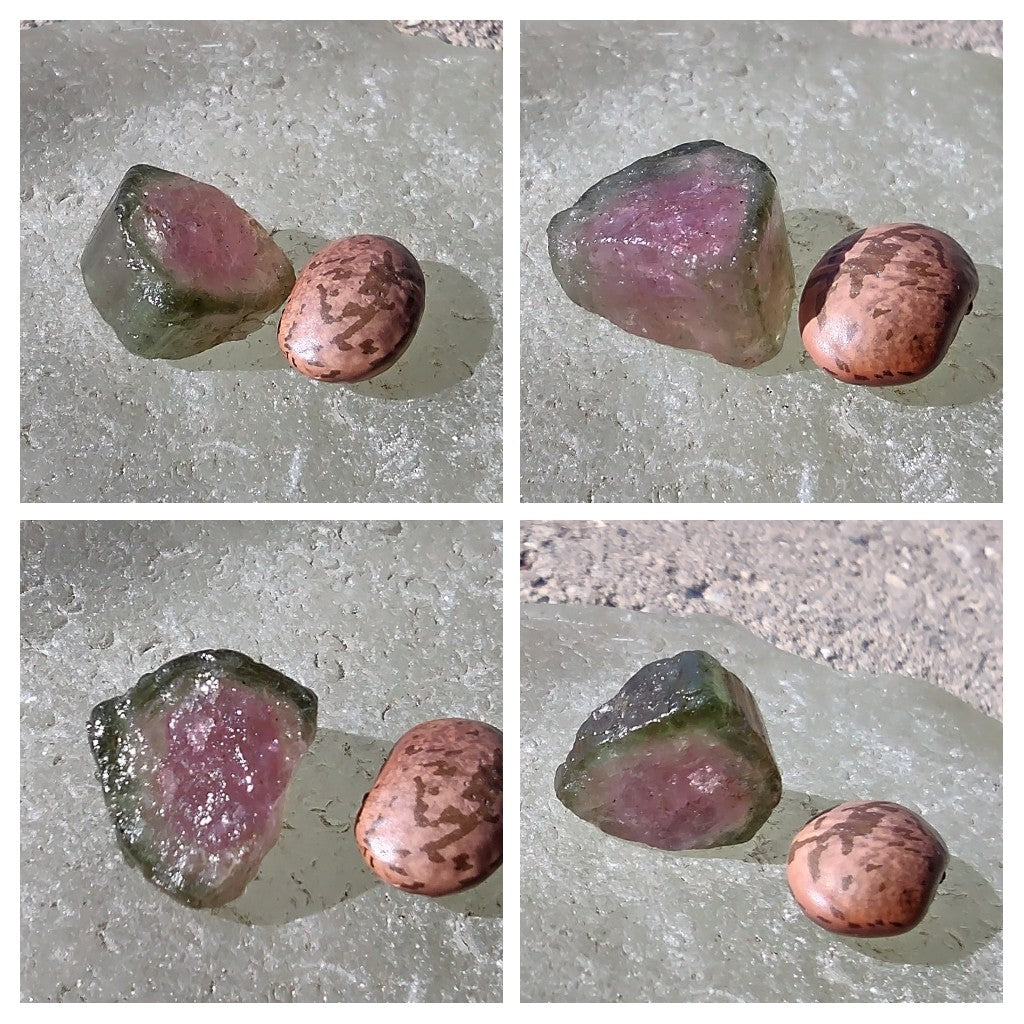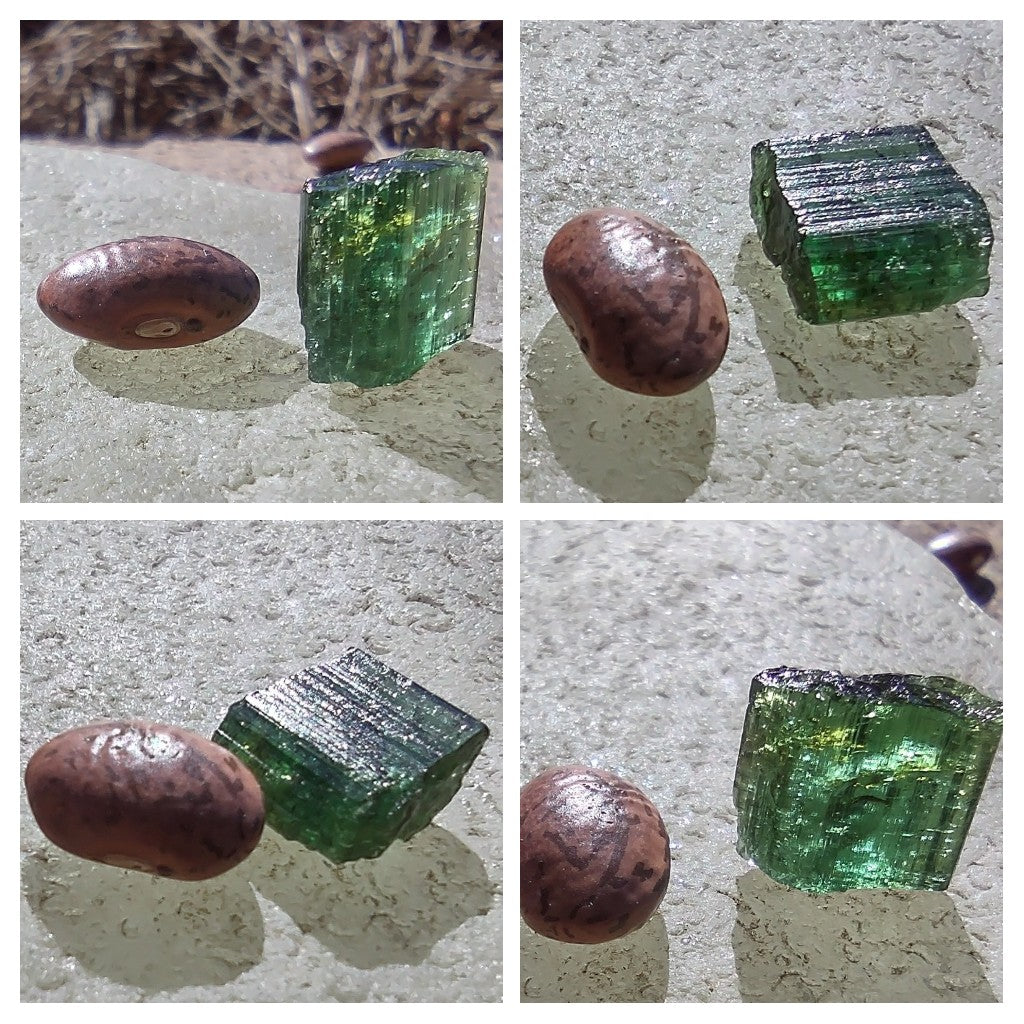Oceanview Mine
Tourmaline (Oceanview Mine)
Tourmaline (Oceanview Mine)
Couldn't load pickup availability
Gemstone: Tourmaline
This listing is for one tourmaline gemstone. Each unique gemstone is photographed from multiple angles so you know what you will receive.
Some people wrap them in gold or silver wire and turn them into necklaces. Others keep them as a specimen, or display, gemstone.
People assign value to these by the following metrics:
- Color - saturated, more vibrant colors preferred, but not too dark as to no longer allow light through
- Clarity - how transparent/ how few inclusions (opaque is less valuable to jewelers)
- Size - bigger is more expensive
Comes in a wide range of colors, including:
- Rubellite (bubblegum pink or red)
- Deep green
- Light green
- Watermelon (pink to green in one gem)
- Light blue
Excavated by Jeff Swanger and team at Oceanview Mine in San Diego County. This area is where they mine pegmatites. This is when a bunch of lava cools into granite, but some areas of lava have more water with minerals in it. These cool more slowly and the crystals form into pockets in the granite. These pockets are called pegmatites.
The miners do not know when they will get to another pocket of gems. So availability of this tourmaline is inconsistent and it may possibly not be present in the mine anymore.
When formed: about 110 millions years ago, about 7 kilometers (~4.5 miles) deep
Chemical composition: boron silicate
Crystal structure: Ditrigonal pyramidal
Hardness: 7-7.5 on the Mohs scale
Tourmaline is a stunning mineral that has been prized by humans for centuries for its unique colors and properties. From ancient times to modern day, tourmaline has been used in everything from jewelry and ornamental objects to scientific research.
Tourmaline has a long and fascinating history. The ancient Egyptians used it in their jewelry and other decorative objects, while the Chinese used it in carvings and as a healing stone. In fact, the word "tourmaline" comes from the Sinhalese word "tura mali," which means "stone with mixed colors."
But tourmaline wasn't just valued for its beauty – it also had practical uses. In the 18th century, it was used to create static electricity, and was often used in scientific experiments. Today, it's still used in a wide range of applications, from electronics to radiation therapy.
So what exactly is tourmaline? It's a mineral that's composed of boron, aluminum, and other elements, and comes in a wide range of colors, from pink to green to black. Its unique crystal structure and composition give it its distinctive properties, including its ability to generate an electric charge when heated or rubbed.
Tourmaline is a fascinating and versatile mineral that has played an important role in human history. Its unique properties and stunning appearance make it a popular choice for everything from jewelry to scientific research. So if you're looking for a beautiful and fascinating mineral, consider tourmaline – it's a gem that's stood the test of time.
Share

